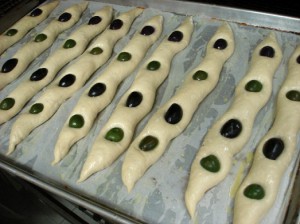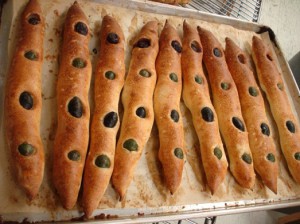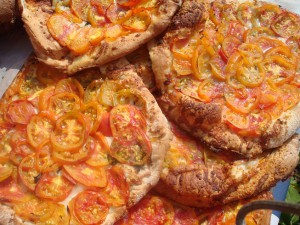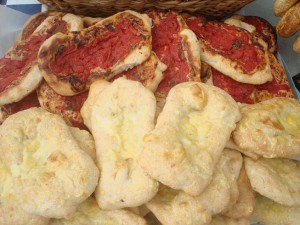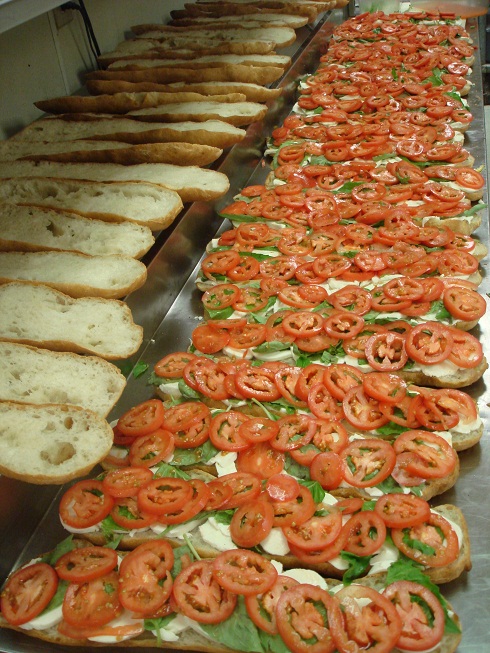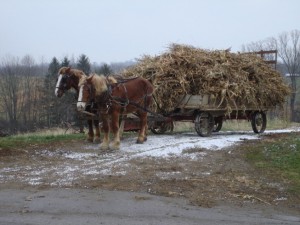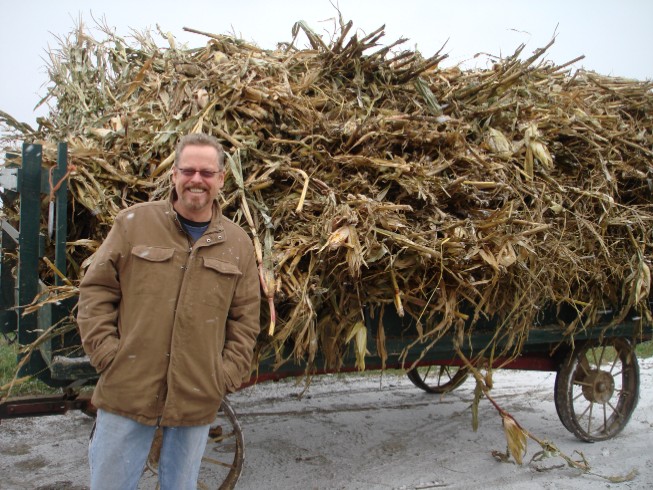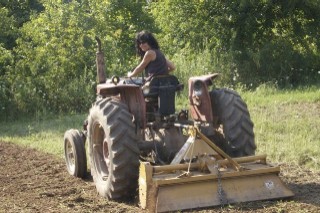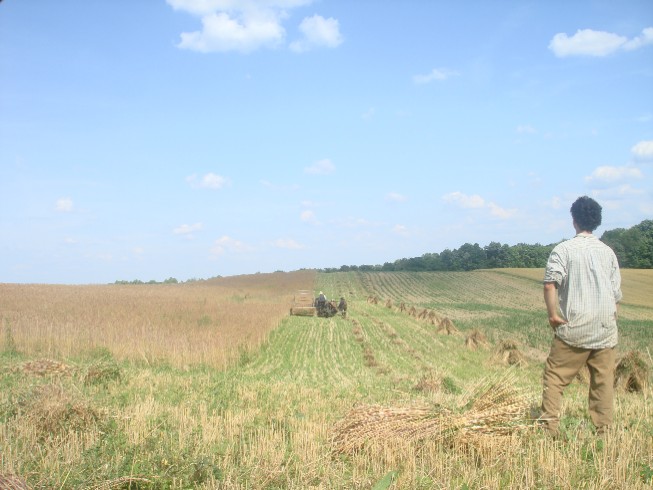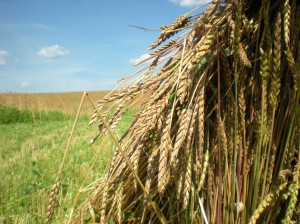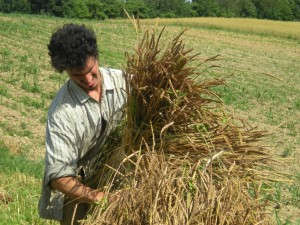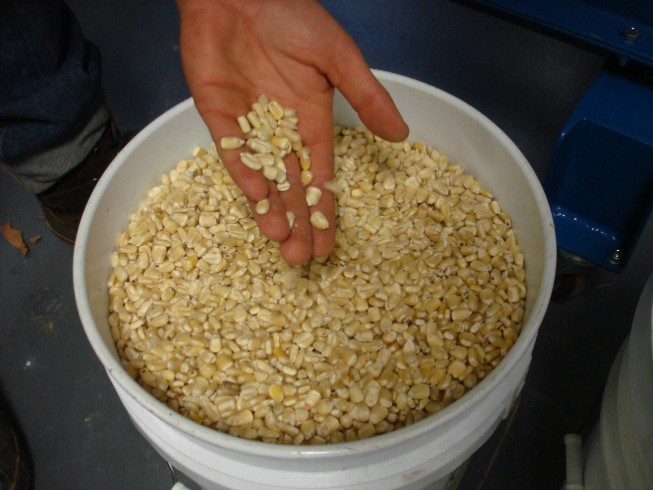There’s nothing I like better than slicing into a great big freshly cooked ciabatta and creating a great big dagwood sandwich before stuffing it into my great big mouth. With protruding cheeks stuffed with this Italian slipper bread, I mumble thanks to the guy who made this happen, Arnaldo Cavallari.

In 1982, Arnaldo retired from car racing to work at his family’s flour mill in Adria, in the Veneto. He probably wasn’t the first to start making ciabatta. Similar breads are made around Lake Como (ciabatta di como) but Arnaldo was the first to set up the methodology and authentication of the Ciabatta Italia.
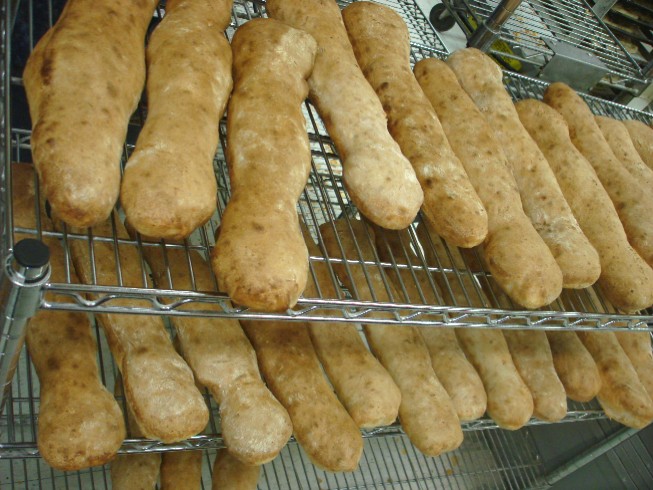
Ciabatta warming.
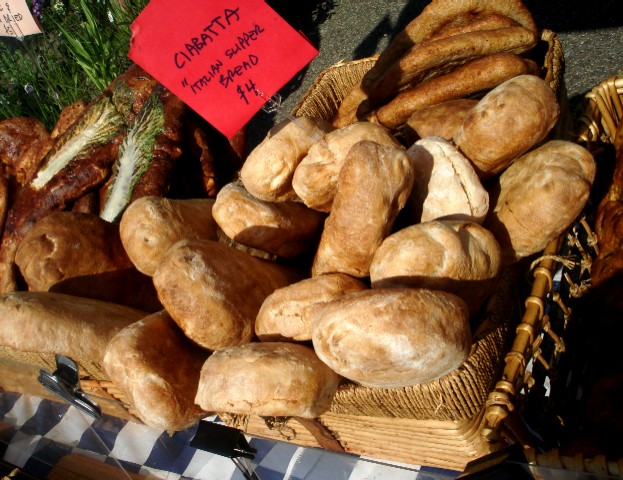
Smaller ciabatta for sale.
Traditional ciabatta is made with tipo 1 italia, a soft flour. This flour is like a strong all-purpose flour or American bread flour, but a tad darker and a bit less refined than the famous “tipo 00” flour used for authentic Italian wood- fired pizza. The protein content of tipo 1 is 10 percent.
My “scaletta” or ladder sticks made with ciabatta dough and baked with pressed green and black Cerignola olives
These days there are (so-called) ciabatta everywhere. The grocery store has small hockey pucks that taste of chalk and chemicals (watch out for that “TBHQ added for freshness”*) but these can easily pass through the gullet with a bucket of water. I’ve even had “Eye-talian” slipper bread in West Virginia that was used to make “house special” garlic bread. Unfortunately, the shape and the way it was cut belied the fact that it was just a hot dog bun.
Making ciabatta is great fun and most rewarding. After 4 days nurturing starters, old dough pre-ferments, a poolish, then mixing the heavily-hydrated mass perfectly, performing due-dillegence in proofing, (rising) and standing by my Impinger pizza ovens, spritzing, peeking and turning, the final product is amazing. Making and cooking ciabatta is like having a kid…that you can eat. Sometimes I vary the way I cook this dough and make variations on the ciabatta theme. Below are two more examples.
It’s usually 6 a.m. when I finish the ciabatta. The sun is starting to peek through my pizzeria window and Garrison Keeler is performing “Guy Noir- Private Detective” on the radio. I can cook 5 ciabatta at a time. I usually eye one that I save just for me. After slicing some room temperature Brie, Genoa salami, prosciutto di Parma, arugula and fresh tomato, I am in heaven.
If you want my recipe for ciabatta, just send $1000 dollars (Canadian) to me. Or if you want a really great recipe, just go to Peter Reinhart’s blog.
*TBHQ is a by product of butane. It is banned in Europe and Japan because of its proven relationship with ADHD and hyperactivity in children. Its use has grown since large food corporations have stopped using trans-fats in their foods. This means that they have to use real oils instead. To store these oils in massive quantities, they spike them with TBHQ. Unfortunately for us, because of lobbying efforts by large corporations, if a chemical is less than 5% of the product, the food companies do not have to put it on the label.

